I want to design a grouped barplot for data arranged as follows
sx1pre sx1post sx2pre sx2post
1 1 1 1 0
2 1 0 1 0
3 0 1 1 0
4 1 0 0 1
5 1 0 1 0
6 1 0 1 0
I want to compare for each sx (1 or 2) the frequency of"pre" and "post", in a single graph. I would like to graphically represent the percentages of patients showing one symptom (sx) before the operation (pre) , over the total, versus the the ones that show the same symptom after (post). Thanks
